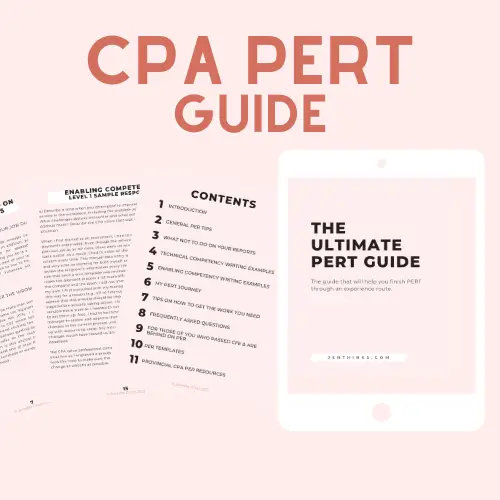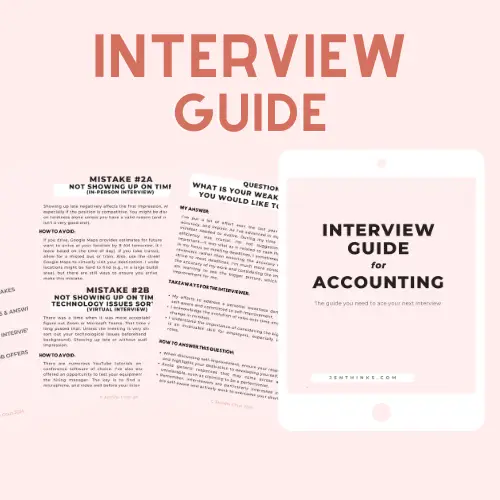A reader reached out to me asking if I can share my debriefing notes for Core 2. Unfortunately, my debriefing notes for Core 2 were hand-written and all over the place. However, I thought it might be useful if I share the list of topics I studied for the Core 2 exam. Note, I wrote my exam at home due to the pandemic and the format was two 60-minute cases with no MC (used to be one 60-minute case with 75 MCs).
RELATED: How To Debrief Cases Effectively
This list is not meant to be a complete list so it is important to review the latest version of The CPA Competency Map to ensure full coverage of topics for the exam. My suggestion would be to use my list as a supplementary resource for your study for the Core 2 exam.
YOU MIGHT BE INTERESTED – Densmore for CPA PEP – Are The PEP Essentials Packages Worth It?
List of Topics I Studied For Core 2 Case-Only Exam
Ethical Issues
- Analyze using the WHAT + WHY technique, e.g., The auditor should not accept the client’s gift (WHAT) because it is a conflict of interest (WHY)
Finance Options Analysis
- Discuss financial impact first, e.g., loan amount, interest expense
- Discuss qualitative pros and cons for each option
- Provide a supported recommendation by tying back to the pros while offering ways to mitigate risks
Governance – Vision, Mission Statement, Values
- Understand what vision, mission statement and values are
- When requested, analyze whether the company’s action or proposed plan is aligned with its vision, mission statement and/or values
- Be able to provide recommendation on revised vision, mission statement and/or values
~ More CPA Posts ~
CPA PEP Core 2 – How to Study for the Module and the Exam
CPA PEP Core 2 – List of YouTube Videos That I Found Helpful
CPA PEP Module – Regular Module or Extended Module?
Outsource vs Manufacture In-House
- analyze both options: outsource and manufacture in-house quantitatively and qualitatively
- state your assumptions, e.g. similar quality for both options
- ignore the expenses that are common for both options, e.g., the cost for a marketing manager
- provide a recommendation that is supported by pros while offering ways to mitigate cons
Performance Management
- Understand the different performance techniques such as Balanced Score Card (BSC), SWOT analysis, PESTEL analysis and Porter’s 5 Forces
- Be able to analyze a company using any of these techniques
Production Schedule
- prepare a production schedule in this order: Sales Budget, Production Budget, COGS Budget, Selling & Admin Budget, Net Income Statement
Quantitative Analysis
Capital Budget
- triggers: should the company buy a new asset? should the company expand?
- applicable techniques: discounted cash flow/NPV, IRR, payback period
Financial
- triggers: does the company have enough cash to purchase the new asset? if the company expands, is it still viable?
- applicable technique: undiscounted cash flow analysis
Product
- trigger: which product should the company add or drop?
- applicable techniques: contribution margin analysis, constrained resources analysis
Income Tax
- trigger: how much tax will the company have to pay?
- applicable techniques: calculating taxable income, taxes payable, cost allowance calculations
Ratio Analysis
- know how to perform vertical analysis, e.g., if gross margin improved, that means operating efficiency improved
- know the categories and ratios for each of them
- liquidity – current, quick
- asset turnover – AR turnover, average collection period, inventory turnover
- profitability – gross margin %, profit margin, return on assets, return on equity
- debt service – debt, debt-to-equity, debt service, AP turnover, days payable outstanding
Sensitivity Analysis
- triggers: potential savings, what is the worst-/current-/best-case scenario, varying sales levels
- analyze all scenarios and provide a conclusion
Sole Proprietor vs Incorporation
- be familiar with the pros and cons for both options
- analyze the options by listing pros and cons for both and make a recommendation supported by case facts and pros
Transfer Pricing
- understand the different transfer pricing models: Market Price, Cost-Based Price, Negotiated Price
- be able to make a pricing model recommendation supported by case facts
Variance Analysis
- watch this Youtube video
- learn the AQ x AP / AP x SP / SQ x SP model as that was all I needed
Weakness, Implication, Recommendation Technique (WIR)
- this technique is applicable to multiple triggers and analyses
- it helps ensure you analyze the issue holistically by identifying the weakness/problem, explaining the implication/impact and providing a recommendation
Weighted Average Cost of Capital (WACC)
- understand what WACC is by watching these two Youtube videos (#1, #2)
- know how to calculate WACC using the formula
- know when you use WACC for quantitative analyses
Working Capital Improvement
- watch this hilarious Youtube video to understand what working capital is
- be able to analyze reasons for working capital issues (e.g., AR turnover ratio is too low) and provide a recommendation (e.g., improve collection strategy)
Conclusion
As I have mentioned in the beginning, this list is not exhaustive and is meant to be supplementary to your own study material. However, I hope it helps you identify one or two topics that you might have missed studying for the Core 2 exam.
🍀Good Luck🍀


